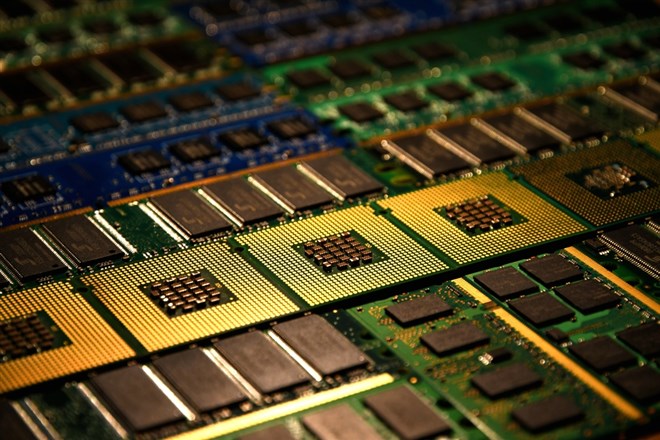
Recent word connected to Advanced Micro Devices (NASDAQ:AMD), more commonly known by its ticker symbol “AMD”, drove some hefty new gains as analysts considered the processor market more closely. After Intel's (NASDAQ:INTC) recent bombshell move that it was getting back into chip-building every bit as hard as chip design, word out of Northland Capital Markets says that AMD may have just landed a new edge.
The Faux Pas That Boosted AMD
The reports suggest that, thanks to Intel's move, AMD now has an advantage it can put to work. By Intel stepping back into chip making, it's opened up a path for AMD to become a much more favored entity with the current chip making market. Essentially—as noted by analyst Gus Richard with Northland Capital—by declaring itself a competitor with Taiwan Semiconductor Manufacturing Co (NYSE:TSM), Intel may have just slit its own throat at the company.
Since Intel's recent move to build chips also calls for it to outsource some of its current product line with TSMC—remember that the Intel plants won't be fully operational for another three years at last report—that could leave Intel “persona non grata” (Latin for “an unwelcome person”) at the chip maker, and that could also leave Intel flat-footed when it comes to building chips in the near term.
That in turn could be all the room AMD needs to step in, ingratiate itself with TSMC, and land a hefty chunk of TSMC's processor-building muscle all to itself. Additionally, by having TSMC increasingly on its side, AMD may well end up with better access to emerging technology, and a steadier line of support for the processor, meaning higher average selling prices—Intel chips might actually be harder to find as a result—and improved margins.
All is not lost for Intel, though; Richard projects a possible future in which AMD is a winner now but may not be for long. Intel may ultimately, Richard notes, be able to improve its own operations thanks to better packaging technology, among other things. But Richard notes that this idea is unproven—it couldn't be much else—and actually seeing if it works is still years away.
Analysts Enthusiastic About AMD's Chances
Meanwhile, the word from the broader analyst pool, as based on our latest research, is weighted fairly heavily in favor of a buy. The consensus has slipped a bit over the last year, but remains enthusiastically in the “buy” camp.
A year ago, AMD had 22 “buy” ratings to its credit, along with 12 “hold” and one “sell” rating. That improved to the bullish six months ago, with 24 “buy” ratings, nine “hold” and two “sell”. Last month, the ratings slipped a bit bearish, with 22 “buy” ratings, eight “hold” and two “sell”. Today, we're at 21 “buy,” seven “hold” and three “sell,” which is the most bearish the company's been since October of 2019. That's still not very bearish, of course, but there are some signs of potential slowdown from the analyst pool.
Meanwhile, the price target seems to be plateauing in the $74 - $105 range. The current average price target is $90.37, and the plateau has been in play since roughly August of 2020. With AMD currently trading at $75.82 as of this writing, that opens up quite a bit of potential upside to come.
Gunning For the Competitive Edge
While Richard has a point about Intel's potential short-term weakness here—we mentioned as much yesterday; that three-year lag is not going to help matters much—there are other points giving AMD an edge as well. For instance, new reports suggest that AMD will not be restricting how people use the company's Radeon RX 6700 XT graphics processors. That may not mean much, but it comes out on the heels of Nvidia (NASDAQ:NVDA) putting restrictions on its graphics cards that make them impossible to use as cryptocurrency mining systems. Thus, Nvidia has actively shut itself off to a line of business—crypto miners—while AMD has rolled out the welcome mat, which here looks a lot like a red carpet.
AMD will need its advantages; with Intel working on a three-year plan to get back into chip-building, small companies have an opportunity to swoop in and gain market share. We're already starting to see that in companies like Tachyum, a start-up chip-maker that's bringing its Prodigy Universal Processor into play. With Prodigy actually set to outperform Nvidia's best graphics processor units (GPUs), that could be a real threat to the broader market.
It's not clear that Intel has actually committed a “faux pas” here; there's still a global processor shortage and trying to make more isn't exactly a bad move. It is, however, a move that will have short-term ramifications throughout the market, and leaves some opportunity for AMD et al to step in and seize some short-term market share. AMD may indeed have landed an edge, and makes itself well worth considering as an investment.
Companies in This Article: